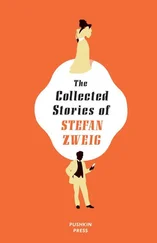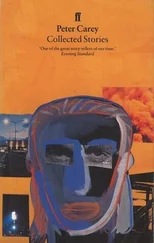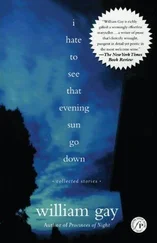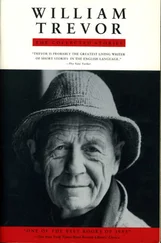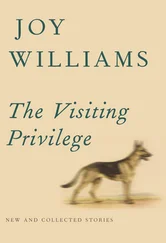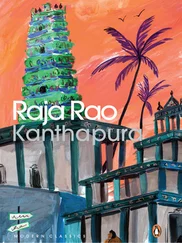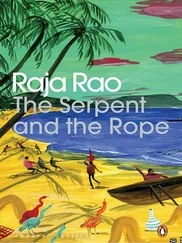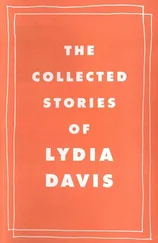Raja Rao - Collected Stories
Здесь есть возможность читать онлайн «Raja Rao - Collected Stories» весь текст электронной книги совершенно бесплатно (целиком полную версию без сокращений). В некоторых случаях можно слушать аудио, скачать через торрент в формате fb2 и присутствует краткое содержание. Год выпуска: 2014, Издательство: Penguin, Жанр: Классическая проза, на английском языке. Описание произведения, (предисловие) а так же отзывы посетителей доступны на портале библиотеки ЛибКат.
- Название:Collected Stories
- Автор:
- Издательство:Penguin
- Жанр:
- Год:2014
- ISBN:нет данных
- Рейтинг книги:5 / 5. Голосов: 1
-
Избранное:Добавить в избранное
- Отзывы:
-
Ваша оценка:
- 100
- 1
- 2
- 3
- 4
- 5
Collected Stories: краткое содержание, описание и аннотация
Предлагаем к чтению аннотацию, описание, краткое содержание или предисловие (зависит от того, что написал сам автор книги «Collected Stories»). Если вы не нашли необходимую информацию о книге — напишите в комментариях, мы постараемся отыскать её.
Collected Stories — читать онлайн бесплатно полную книгу (весь текст) целиком
Ниже представлен текст книги, разбитый по страницам. Система сохранения места последней прочитанной страницы, позволяет с удобством читать онлайн бесплатно книгу «Collected Stories», без необходимости каждый раз заново искать на чём Вы остановились. Поставьте закладку, и сможете в любой момент перейти на страницу, на которой закончили чтение.
Интервал:
Закладка:
Like Govindan Nair, Pai too has his moment of illumination.
I saw truth not as fact but as ignition. I could walk into fire and be cool, I could sing and be silent, I could hold myself and yet not be there. . I smelled a breath that was of nowhere but rising in my nostrils sank back into me, and found death was at my door. I woke up and found death had passed by, telling me I had no business to be there. Then where was I? Death said it had died. I had killed death. When you see death as death, you kill it. (1965: 113–14)
Again, the British presence in India is inescapable; it is reinforced by the ubiquitous presence of the English language. And what better representative of English can there be than Shakespeare himself? Rao’s coupling of Shakespeare and the cat in the title is ironic. Both Sankara and Ramanuja wrote their influential works in Sanskrit, the deva-vani, ‘the language of the gods’. Now, English, the new deva-vani, has replaced Sanskrit as the lingua franca. And Rao himself, unable to write in Sanskrit, writes in English. The irony is directed at himself. In the novel, Nair revels in Shakespearean locutions. Unable to rid themselves of the British, Indians retreat into the past, finding solace in religion and philosophy. Rao’s ‘Tale of India’ could not have been more timely. It points to India’s impoverishment as an enslaved nation.
The Cat and Shakespeare exhibits none of the communicative strategies of Kanthapura or The Serpent and the Rope . Unlike the highly individual and expressive idiolects of the earlier novels, that of The Cat and Shakespeare is deliberately ordinary, since the intent is to express traditional lore. In this process, Rao has pitted the symmetry of language against the asymmetry of thought with its indirections and paradoxes. The highly reductive style of The Cat and Shakespeare is in strong contrast to the expansiveness of the other novels.
Raja Rao’s short stories reveal him as a master who extended the possibilities of the genre. In his hands, the form becomes an instrument of metaphysical inquiry that transforms the language into true poetry.
First published in 1933 in Asia, New York, when Rao was only twenty-five, ‘Javni’ has attained the status of a classic. The epigraph from Kanakadasa, a sixteenth-century Kannada devotional poet, suggests the theme of the story: the relationship between an English-educated boy, Ramu, a Brahmin, and a low-caste servant, Javni, a widow, who works for his married sister, Sita. The story is a plea for women’s emancipation and the abolition of the caste system. Ramu and Javni share the same religious nature, his at the level of metaphysics, and hers in a belief in spirits and simple devotion to the goddess Talakamma. Ramu sees himself as an instrument of social change that breaks down the barriers of caste. Talking to Javni, Ramu experiences a kind of epiphany in which he sees her as a divine being, a great soul. This mood, of course, does not last, and Ramu accepts the distinctions of caste between them as the family moves away two years later. He accepts the fact that Javni is but a servant who must be left behind. He universalizes her and sees her as one with the sky and the river. His mental act is in keeping with Indian metaphysics: man is seen to be one with nature, his apparent separateness being nothing but an illusion.
Ramu’s initial indignation at Sita’s treatment of Javni is replaced by admiration and later by acceptance of the social demands of caste. Javni’s eating in the byre is the source of conflict between Ramu and Sita. Sita sees the mixing of castes as irreligious, while Ramu sees putting Javni with the cows as inhuman. Sita cannot transcend her caste.
Time and again I had quarrelled with my sister about it all. But she would not argue with me. ‘They are of the lower class, and you cannot ask them to sit and eat with you,’ she would say. 19
Throughout the story, Javni is identified with the cow; for example, ‘Javni, she is good like a cow’ (1978: 86). Later, the identification between Javni and the cow is complete when we are told that ‘Javni sat in the dark, swallowing mouthfuls of rice that sounded like a cow chewing the cud’ (1978: 88). In her cow-like way, Javni accepts the teaching of the dominant caste and learns to live with the discomfort imposed by caste distinctions. Ramu recognizes in her the greatness that knows no caste and yet accepts the caste system. The cow functions as an expanding symbol that points to India’s survival as a civilization, to Hinduism and its reverence for life (ahimsa), and to the transcendentalism of a world where the sacred is mixed with the profane. Ramu’s awareness at the metaphysical level that there is no caste coexists with his social acceptance that such distinctions do exist. ‘No, Javni. In contact with a heart like yours, who will not bloom into a god?’ (1978: 96).
Tagore’s classic story of village India, ‘The Postmaster’ (1891), ends on a similar note. The orphan Ratan is abandoned by the postmaster, who finds life in the village of Ulapur intolerable and returns home to Calcutta. The postmaster is more than just an employer to her; he is a father figure, someone she respects and admires. He had provided her a home. For one brief period, his illness brings them together. Ratan rises to the occasion and is transformed from a girl into a young woman. So when Ratan asks him, ‘“Dada, will you take me to your home?” The postmaster laughed. “What an idea!” said he; but he did not think it necessary to explain to the girl wherein lay the absurdity.’ 20On leaving the village, the postmaster takes comfort in philosophic reflection: ‘The grief-stricken face of a village girl seemed to represent for him the great unspoken pervading grief of Mother Earth herself.’ (1918: 124) Abandoned by their families, the Javnis and Ratans learn to fend for themselves in an inhospitable world. Both stories underscore the resilience of the Indian woman under stress.
‘Nimka’ was first published in The Illustrated Weekly of India, Bombay, in 1963. Set in Paris in the first half of the twentieth century, the story reveals the extent of Rao’s immersion in European culture. Himself an exile in France, the narrator, an Indian student at the Sorbonne, is able to sympathize with Nimka’s plight as a White Russian émigré who flees her homeland in the wake of the Bolshevik Revolution of 1917. Attracted to Nimka, the narrator goes into raptures over her beauty: ‘Her beauty had certainty, it had a rare equilibrium, and a naughtiness that was feminine and very innocent. . It was beauty — it always will be, and you cannot take it, and as such you cannot soil yourselves’ (1978: 99).
Nimka’s interest in India begins with her interest in the narrator. It expands thereafter to include Tolstoy’s admiration of Gandhi, and stories from the epics, the Mahabharata and the Ramayana, especially the story of Nala and Damayanti from ‘The Book of the Forest’ (the Vanaparvan ) of the Mahabharata. Nimka sees in Damayanti, the princess of Vidarbha, a reflection of her own unhappy life. But then she is no Damayanti, and Count Vergilian Kormaloff, her husband, is no Nala, king of Nishadha. One misfortune after another strikes Nala and Damayanti: Nala loses his kingdom to his brother Pushkara in a game of dice, and lives in the forest with Damayanti, whom he later abandons; but in the end, he wins his kingdom back, and is reunited with Damayanti. Kormaloff loses his entire fortune betting on horses, abandons Nimka, and their son, Boris, and flees to Monte Carlo. When seventeen years old, Boris goes back to Russia and is never heard of again. Nimka’s dream of returning to the Smolny courtyard in St Petersburg never materializes. She is all alone now. ‘She asked nothing of life’ (1978: 103).
Читать дальшеИнтервал:
Закладка:
Похожие книги на «Collected Stories»
Представляем Вашему вниманию похожие книги на «Collected Stories» списком для выбора. Мы отобрали схожую по названию и смыслу литературу в надежде предоставить читателям больше вариантов отыскать новые, интересные, ещё непрочитанные произведения.
Обсуждение, отзывы о книге «Collected Stories» и просто собственные мнения читателей. Оставьте ваши комментарии, напишите, что Вы думаете о произведении, его смысле или главных героях. Укажите что конкретно понравилось, а что нет, и почему Вы так считаете.

